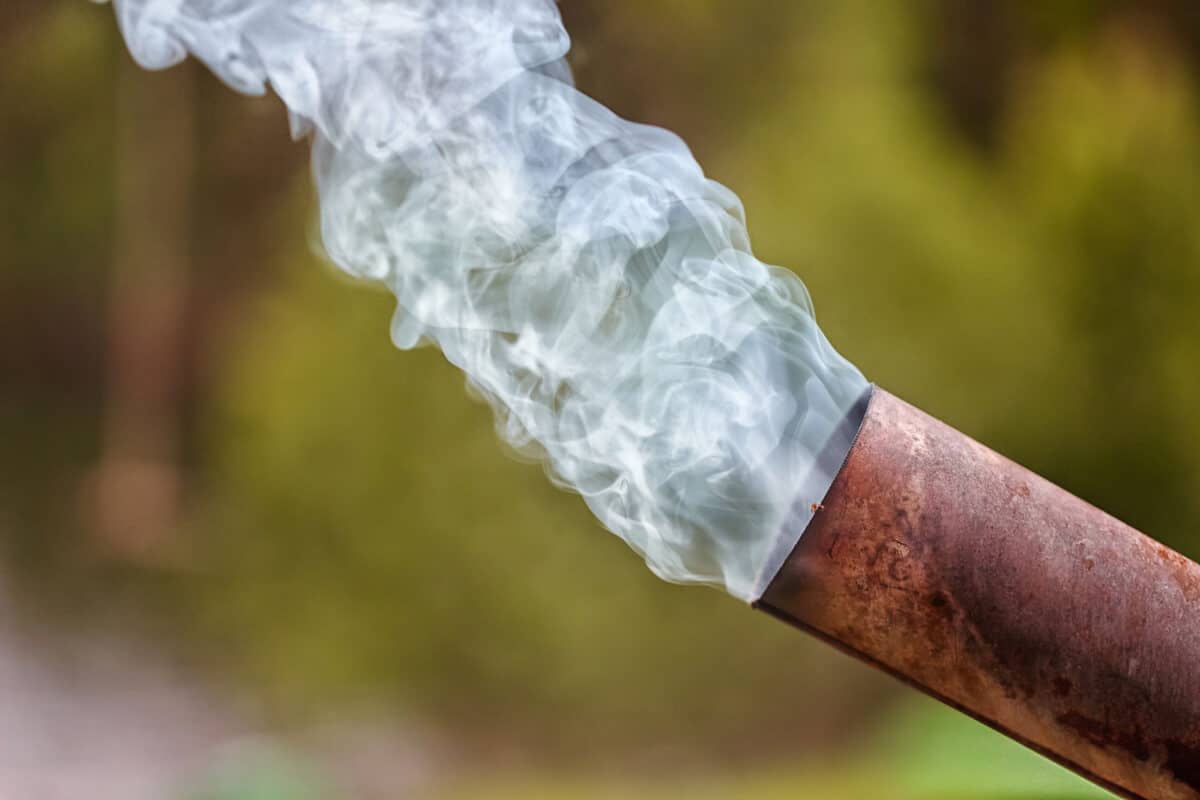The environmental impact of outdoor heaters depends on whether you use electricity or gas. Electric heaters are more sustainable than gas.
Using an outdoor heater is a great way to warm up your garden space, especially during chilly weather or to prevent dampness.
If you are considering purchasing an outdoor heater, it’s important to note that electric heaters are more environmentally friendly than other options.
In this article, we will discuss why it’s important to consider other options before purchasing an outdoor heater.

Table of Contents
Electric Power: Less Environmental Impact of Outdoor Heaters
Electric heaters use infrared technology or heating elements, depending on the type of electric heater you use and the Kw rating you will have different effects.
Apart from producing heat, gas heaters also emit CO2, unlike this product.
It’s important to note that electric heaters consume electricity, which should be considered when assessing the environmental impact of outdoor heaters.
However, they are generally perceived as safer by consumers as there is no risk of carbon monoxide poisoning.
It’s common for people to overlook what happens to an electric heater when its element stops working.
Due to the way these heaters are designed, only an electrician can open them up and repair them.
It is not possible to replace the elements of the heater, so it needs to be disposed of properly, which contributes to the environmental impact of outdoor heaters.
There are multiple electric patio heater models available, each with its own advantages and disadvantages.
Short-Wave Electric Infrared Heaters
Short-wave infrared is just one type of electric heater.
Short-wave infrared technology uses airwaves to heat objects, similar to how the sun warms us.
The biggest advantage is that direct airflow is not required.
As long as there is no obstruction between the heater and the person, the heat can be felt immediately once the heater is turned on.
The short wave heater emits a pleasant and deep heat that can effectively warm the skin.
This heater has a low environmental impact of outdoor heaters.
When the heater is not in use, turn it off. Flip the switch to get instant heat when someone or something requires warming.
Related Reading: What is Infrared Heat? Understanding Effective Outdoor Heating. Get the Facts.
Long and Medium-Wave Electric Infrared Heaters
Long and medium wave infrared heaters cost less but have disadvantages.
Long and medium-wave heaters heat the air around them, thus requiring time to heat the area.
Placing a heater outside in the garden may not be effective as the heat tends to dissipate quickly, especially when combined with wind.
Therefore, using a long or medium electric infrared heater in a garden may not be the best choice.
This particular type of heater is more suitable for indoor use, such as drying out clothes or providing heat for a greenhouse during frosty periods.
Some models can be left on overnight, which makes them an excellent option for emergency backup.
Heat Lamps
You can also purchase heat lamps that use an element similar to household lightbulbs but radiate intense white light that can generate heat over 2,000 degrees Celsius.
These elements have a coating that is generally red or gold to stop people from being injured by the intense white lighting that emits from the element.
Similar to a short-wave infrared heater, a heat lamp also provides instant warmth when turned on.
However, in extremely cold conditions, you need to be in close proximity to the lamp to feel the warmth.
Some heat lamps allow for easy replacement of the heating element, unlike other lamps.
If you choose to use an electric heater, it is important to consider the power source.
Make sure the area where you intend to use it has an accessible power outlet.
Also, ensure that any cables are securely taped down or covered to prevent tripping hazards.
A waterproof cover should be used to make sure no moisture gets into the point of power.
Gas Outdoor Heaters
Gas-powered heaters can be fueled using gas canisters or bottles purchased or rented from local hardware stores or gas stations.
Gas burners are not eco-friendly, but they are necessary for remote areas without access to electricity.
You’ll have to weigh out the environmental impact of outdoor heaters with the need for heating your area.

A gas burner produces heat through a naked flame. It can add to the ambiance of an outdoor experience while giving off more than adequate amounts of heat.
Gas-powered burners should be used with extreme caution due to the presence of a naked flame. If tipped over, they can cause a serious incident.
When using gas-powered outdoor heaters, ensure they are attached and secured in an area out of reach for small children.
Gas outdoor heaters are a cheaper alternative to outdoor heating, but their cost of refills needs to be taken into account, and their efficiency is quite poor.
When looking at gas vs electric for patio heaters, there are many variables to consider other than just the fuel source.
Gas-powered heaters should be used in well-ventilated areas to prevent carbon monoxide poisoning and reduce heat loss.
Related Article: Electric or Gas Patio Heaters: Which One is Better? A Comprehensive Comparison
Conclusion
The use of outdoor heating is a great idea when entertaining guests in the evening, but before buying one, several factors should be considered.
Make sure to check for power and weather conditions to protect your heater.
In trying to reduce the environmental impact of outdoor heaters, look for electric first and then an efficient burning gas-powered model.
Extend your outside entertaining with an outdoor heater, but please remember our planet when choosing the right type of heater.
Be Safe!
Enjoy living the outdoor life!!!
Related Article: 7 Common Patio Heater Problems and How to Best Fix Them
